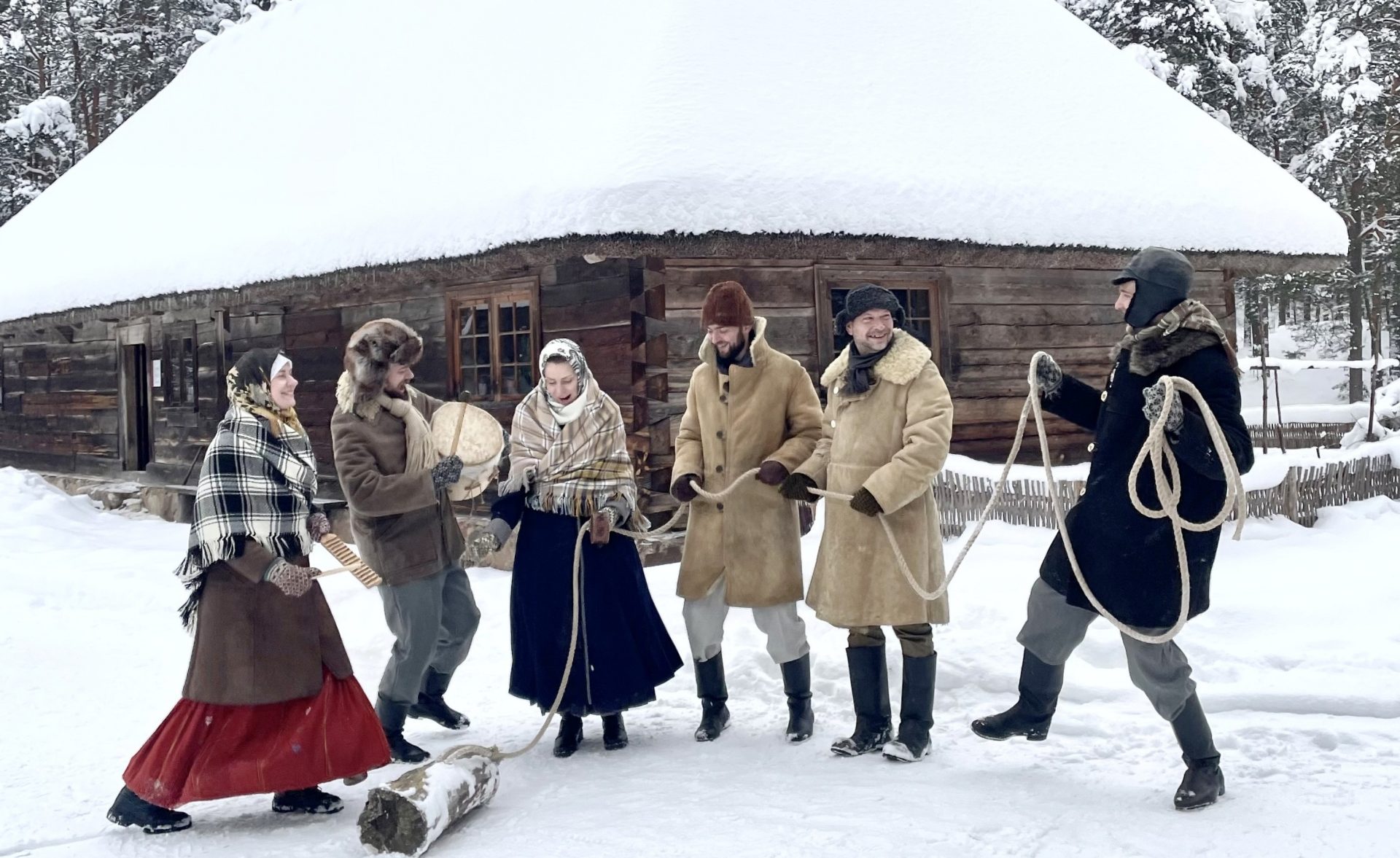Historically, Latvians celebrated the winter solstice to mark the return of the light. With the arrival of Christianity, we began to celebrate Christmas too. Today, in an interesting fusion of folk practices, Christian customs, and contemporary innovations, we celebrate both – the winter solstice on 21 December and Christmas Eve on 24 December. Let’s explore some compelling rituals and beliefs passed down from our ancestors – simple to follow and perfect for adding a Latvian touch to your festivities!

The epic feast provides energy for dragging the yule log
The dragging of the yule log is a significant annual ritual where families drag a log around their property or groups of neighbors drag the log from home to home, finally burning it. This symbolic act is thought to represent the shedding of the year’s hardships, adversities, and misfortunes. It is a loud and joyous happening, involving song, dance, and play.








